The UK is breaking from the EU to press ahead with gene editing. Could it cut costs on shelves? And is it even worth the risk?
In May, scientists at the John Innes Centre in Norwich unveiled a new breed of biofortified tomato so rich in vitamin D that a single gram of its dried leaves could deliver an adult’s recommended daily amount 60 times over.
It is hoped the super crop could go some way to tackling the vitamin D deficiencies that affect a billion people worldwide – and was a breakthrough only possible thanks to a scientific process known as gene editing.
From creating disease-resistant pigs, to elite wheat capable of producing high yields in tough conditions, the applications for the technology – which makes precise alterations to existing genes using molecular tools – appear to be vast.
And with the arrival of the Genetic Technology (Precision Breeding) Bill currently working its way through the House of Commons, it also seems the UK could be one step closer to allowing such products on shelves.
Many would welcome a relaxation of the rules around genetic engineering. It could, they say, bolster food security, combat climate change and lower food prices against the backdrop of a worsening cost of living crisis. But for others it’s an ill-thought out move toward “deregulation” that could bring disastrous consequences. So, what’s the truth?
When Boris Johnson became prime minister in July 2019 he was clear on his post-Brexit plans for genetic engineering, insisting he would “liberate the UK’s extraordinary bioscience sector from anti-genetic modification rules”. Those rules have meant a de facto ban on all types of genetic engineering in the EU since 2001, with only a single approved GM crop, an insect resistant maize, currently grown in EU fields (albeit genetically modified animal feed is in widespread use).
It had been hoped by many researchers that gene editing would face a different fate. While GM involves the insertion of foreign DNA into a plant or animal, gene editing ‘edits’ existing genes and thereby creates mutations that could otherwise have occurred naturally. But in 2018, the European Court of Justice rejected the distinction, and placed gene edited organisms under the same heavy restrictions as GMOs.

With Brexit though, came an opportunity for the UK to take a different view. And it hasn’t wasted any time in doing so. “Gene editing is a tool that could help us tackle some of the biggest challenges we face – around food security, climate change and biodiversity loss,” said environment secretary George Eustice in September 2021, as he confirmed the decision to move ahead with legislation that will see genetically-edited crops able to enter the UK market for the first time if they can gain approval via the novel foods process.
It’s a step in the right direction, says Johnathan Napier, a professor at Rothamsted Research. But “it’s still quite a small step forward,” he says. “It’s not going to transform UK agriculture or the UK food chain, which is a shame.
“Having said all that, it is incredibly welcome. It’s the first liberalisation of regulation around genetic technologies that the UK has seen in, well, forever. The direction of travel while we were in the EU was that the hurdles got higher and higher, and the regulatory burden got greater and greater, so to be going in the other direction is incredibly encouraging and needs to be celebrated.”
The “powerful tool” could help create crops more resilient against extreme weather, less susceptible to disease, less reliant on fertiliser and even more nutritious, explains Napier. All which would leave UK agriculture better able to withstand some of the many shocks currently being thrown at it. Shocks that include soaring food prices.
As a relatively new addition to science’s suite of genetic engineering tools, there’s currently a lack of comprehensive research to say conclusively whether gene editing can help drive down costs, but there is research on genetic modification that suggests a link. Most recently, a report by the Council for Agricultural Science & Technology (CAST) in 2021 claimed that if the US were to ban biotech crops it would raise food prices by $14bn per year, and cost the US economy up to $4.9bn. That’s based on findings that non-GMO products currently carry premiums of up to 61.8% on shelf.
‘Seduced by technology’
But Pat Thomas, director of civil society group Beyond GM, disputes any idea that the planned relaxation of rules could ease the cost of living crisis. “It’s an incredibly cynical argument,” she says. “The fact is there are no gene edited crops ready to go in the ground right now, and the crisis we’re experiencing is right now.” The first crops could be as long as five years away from production.
It ignores the commercial reality too, points out Paula Kover, of the University of Bath’s department of biology and biochemistry. “The technology is expensive to develop, so companies developing them will be looking for profit, and the idea that gene edited food will necessarily be cheaper is not an obvious consequence,” she says. “I can think of a lot of niche markets developing for crops with extra vitamins and nutrients, and these are upscale products that will not act to give the majority of people access to cheaper food.”
For government to think otherwise is just the latest example of it being “completely seduced by technology as a silver bullet,” believes David Rose, lead of the Change in Agriculture group at Cranfield University. Be it robots picking strawberries or super crops defying climate change, “they’re looking for short-term technology fixes to solve problems, many of which they should have anticipated and had a plan for, but didn’t. They think technology is going to be the cavalry that rides in and solves everything when it won’t.”
What it will do is pander to pressure from commercial and academic quarters, believes Thomas. On the one hand, “we have a very strong biotech research establishment here and they comprise a very strong lobby, we shouldn’t underestimate the influence of that”. Plus, the need to strike up new trade deals outside the EU, with markets that already embrace genetic engineering such as the US, Canada, Brazil and Australia, will be weighing on the government’s rush to push legislation through, in her view.
The result of these muddied and even misguided motivations is legislation that is not “fit for purpose” according to Rose. On one level, it lacks clarity, he says, with vaguely defined terms as to exactly what type of genetically engineered products or techniques will be allowed. Thomas even goes so far as to argue the bill is so wide in scope that it could theoretically allow for genetically modified products too (when challenged on this, Defra reiterated the legislation would only apply to “genetic changes that could have occurred naturally or through traditional breeding methods”).
More broadly it fails to consider the full impact of allowing gene edited foods into the food supply chain, says Rose. That’s a view that was backed up by the Regulatory Policy Committee in June, which said the government’s impact assessment was “weak”.
“In the absence of a wider government strategy to say this is the vision we have for future farming and the place of gene editing within it, then it’s really hard to see whether the checks and balances are in place to make sure it’s used in a responsible way,” adds Rose. It could, for example, be used to further intensify production systems.
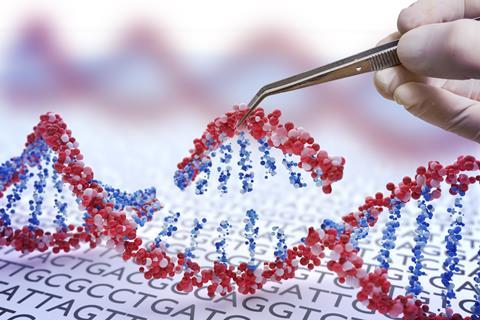
That’s what deeply concerns UK dairy farmer Patrick Holden, CEO of the Sustainable Food Trust. “It will perpetuate the decline of agricultural biodiversity, both of plants and animals.” Already the gene pool used in UK agriculture is dangerously low, he points out. “We’ve lost a lot of the diversity that used to characterise agriculture.” That leaves crops more exposed, not less, he adds. For that reason he and others take issue with the portrayal of GE as a less invasive alternative to GMOs. Not only is the distinction meaningless to the majority of shoppers, they say, but it’s a mischaracterisation. In fact, in a recent interview, Michael Antoniou, a molecular geneticist at King’s College London, said: “At each one of the stages of the gene editing process, you introduce unintended genetic alterations running into the hundreds of thousands. You end up with a plant that carries a high burden of unintended DNA damage with unknown downstream consequences.”
“The government has not looked at the long-term effects of deregulation and liberalisation,” sums up Thomas. “It’s looked at what the impact might be on researchers but not on natural or organic food businesses, the environment or farming. This bill is a free-for-all and unworkable at almost every level.”
‘Disaster waiting to happen’?
Given the long and controversial history of genetic engineering in this country it’s no surprise perhaps that the Genetic Technology Bill, which could see gene edited crops cultivated in UK fields in as little as two years, has reignited passionate views.
For Holden it is a disaster waiting to happen. “The complexity of the genome is beyond the ken of the most sophisticated plant breeders in the world and yet with their arrogance and hubris they think they can redesign plants and animals to suit our purposes,” he says. “The arrogance of the science community is breathtaking and yet another manifestation of the way in which policy and science in agriculture has departed from the wisdom of the farming community that understand agriculture from the ground up,” he says.
But for Cathie Martin, professor of plant sciences at the John Innes Centre, whose team were behind the gene edited vitamin D-rich tomatoes, that isn’t fair.
“We’re proper scientists, and we don’t want to produce something that’s dangerous or rule the world,” she laughs. Yes, the Genetic Technology Bill may have been drafted a little hastily, she accepts, “and isn’t highly defined” but it will be the role of regulatory authorities such as Defra and the FSA to ensure that no unintended product gains approval. “And they will judge that on a scientific basis, not on the basis of campaigners, or NGOs claims that it’s GM coming through in a different guise. They will do it on the basis of whether there’s a risk to either the environment or food safety.”
Even though the genetic mutation that allows tomatoes to produce extra vitamin D could have arisen naturally, the gene edited crop will be subject to the same stringent novel foods process that the likes of insect proteins or CBD are faced with, for example.
For Martin and many other scientists, the benefits outweigh the risks. “It’s a bit like Frankenstein,” she adds. “The worry is a monster will be created that we won’t be able to control.” But with plenty of regulatory mechanisms in place to prevent that happening, she and others insist, that’s simply science fiction.
Food genomes ‘edited’ by science
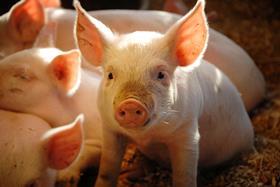
Vitamin D-rich tomatoes
Though the leaves of tomato plants naturally produce vitamin D at very low levels, scientists at Norwich’s John Innes Centre found that by turning off a specific molecule in the plant’s genome they could not only dramatically boost levels of production of the ‘sunshine’ vitamin in the plant’s leaves, but also in the fruit itself.
The leaves could be used to create vegan vitamin D3 supplements, or for food fortification, say scientists.
Disease-resistant pigs
Porcine reproductive and respiratory syndrome (PRRS) costs European pig producers nearly £1.5bn a year. But by deleting a small section of DNA that leaves pigs vulnerable to the disease, scientists at the University of Edinburgh’s Roslin Institute in 2018 created a GE breed with natural immunity.
As one researcher put it: ‘The resulting pig is still 100% pig … or 99.9999999% of a pig.’ The only thing missing is susceptibility to PRRS.
Low-acrylamide wheat

In September 2021, Rothamsted Research was granted permission by Defra to run field trials for its strain of GE low-acrylamide wheat.
The wheat has been edited to reduce levels of the naturally occurring amino acid asparagine, which is converted into acrylamide when bread containing the grain is baked or toasted.
The team believe they can use GE to assuage concerns and produce ultra-low asparagine, non-GM wheat.
Fungi-friendly barley
In April, planting began on a field trial of both GE and GM barley that is hoped could reduce reliance of the crop on chemical fertilisers.
The gene edited variant has been altered to suppress the way in which it reacts with soil fungi. Scientists hope to create barley that more efficiently absorbs water from the soil, water that contains nitrogen and phosphorus – two nutrients currently supplied often via synthetic fertilisers.
Can gene editing ease the cost of living crisis?
- 1
 Currently reading
Currently readingCan gene editing ease the cost of living crisis?
- 2







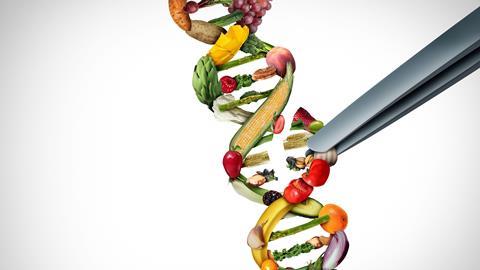


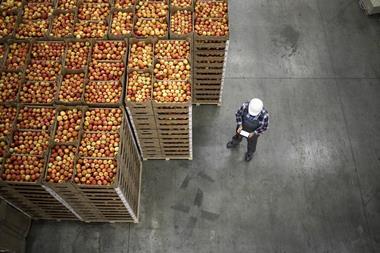
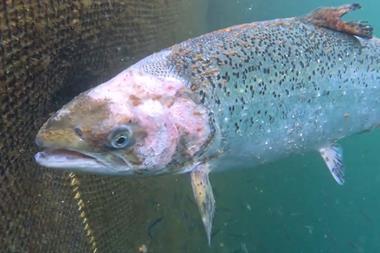







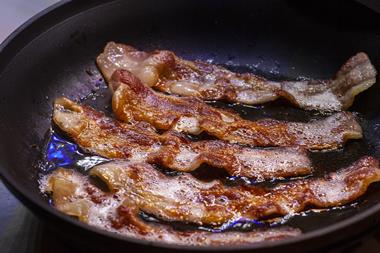

No comments yet